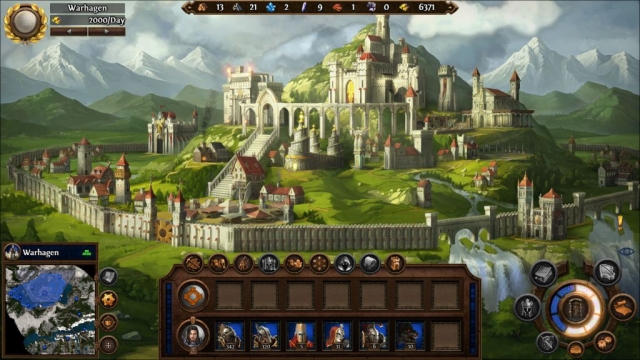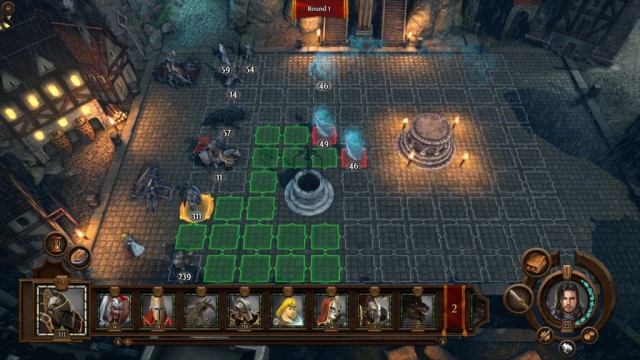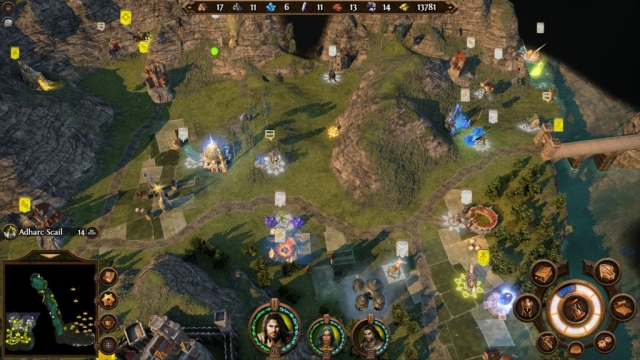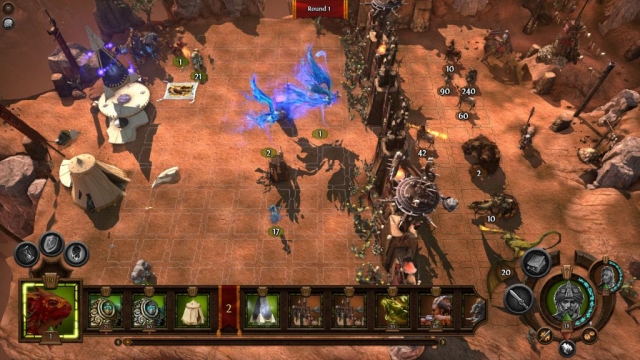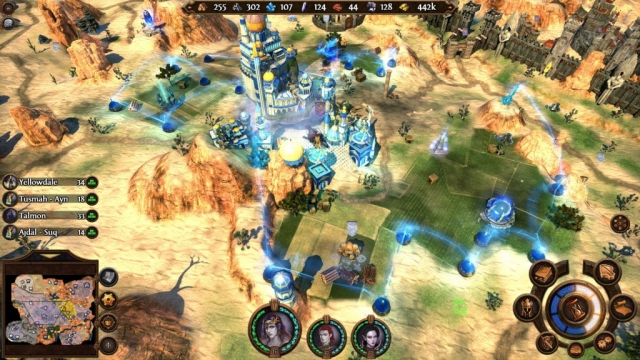Might & Magic Heroes VII
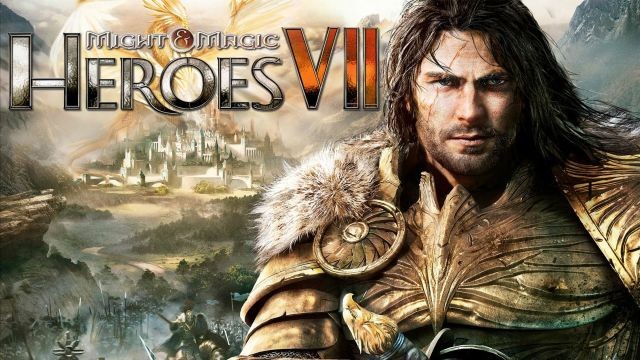
The worst game release I ever experienced was Dungeon Lords way back in 2005. It was incredibly buggy, and it was missing so many features that even if you could get it to work, there wasn’t any reason to bother. It also generated a bunch of negative press — including a score of 0 from the now defunct Computer Gaming World. But after a few patches, the game got to a state where it was pretty playable, and I actually have some fond memories from my time with it.
Hopefully, Heroes of Might & Magic VII can follow the same script. It had all sorts of problems when it was released in September. It didn’t include a tutorial or a manual or any other hint about how to play, there were all sorts of scripting errors in the campaigns, which could prevent you from completing maps, and it had some sort of weird memory leak problem, where the longer you played a map, the more likely you’d crash and be unable to load any of your saves. I made it through the Haven campaign (playing most of the maps twice to figure out how to skirt around the bugs) but then I finally gave up during the Necropolis campaign and decided to wait for a patch.
When I finally got back to Heroes VII, its developer, Limbic Entertainment, had released two patches, one major and one minor. These patches, plus the handful that have followed, seem to have eliminated most of the bugs. The memory leak is gone, and a lot of the scripting errors have been tracked down — although not all of them, as even with the most recent patch I wasn’t able to complete the final map and finish the game. There’s even a tutorial button on the main menu now, although it just sends you to some youtube videos. So this review is for the multi-patched version of Heroes VII.
If you’ve never played any of the Heroes games, they’re all cut from the same mold. You start out with a hero and a town, and you recruit soldiers and fanciful creatures to add to your army. You then use your army to defeat the neutral creatures around your town, which adds experience and levels to your hero, making you more powerful, and also gives you resources, which you can use to upgrade your town and purchase more soldiers and creatures. Eventually as you expand, you run into other heroes, and you fight them and take over their towns until you control the entire map.
The campaigns in Heroes VII revolve around Ivan Griffin, who is on the brink of war with the current emperor. Ivan turns to hit advisors for help, and they give him advice in the form of long stories. Each advisor is from one of the game’s six factions — Academy (magical), Dungeon (dark), Haven (human), Necropolis (undead), Stronghold (orc), and Sylvan (elf) — and the stories they tell turn into six of the game’s campaigns. Then after finishing those campaigns, you play Ivan’s campaign, which allows him to face off against the emperor, and which also does a surprisingly nice job of relating back to the story campaigns. In
total, the campaigns include 27 maps, and they take 100+ hours to complete.
Unlike the other Heroes games, you don’t necessarily control a single hero through each campaign. You might control multiple heroes, or you might control a different hero for each map. This works well for the storytelling theme of the campaigns, as it allows the storytellers to jump around in time and perspective, but it can be bad for the player, since you don’t always know which heroes are going to carry over, or what their importance might be. It’s always frustrating when your low-level fetcher and utility hero from one map is thrust into the limelight in the next map — and is massively unprepared for the job. But at least the campaigns keep you on your toes.
Speaking of your heroes, they’ve seen some changes since Heroes VI. They still rely on four attributes — might (attack power), defense (attack defense), magic (spell power), and spirit (mana total and mana regen) — but the skill system is all new. Each time your heroes gain a level, they receive a random attribute boost, plus a point to spend on their skill wheel. The wheel is different for each hero, and it includes 10 multi-tiered wedges for a variety of categories, including offense, exploration, and diplomacy. Skill wheels and trees are my preference for building heroes, rather than the random skills of old.
Along with regular skills (like the all-time favorite Estates, which grants you more gold each turn) there are now also “governor” skills. You can assign a hero to be the governor of a town, and then all of the hero’s governor skills apply to the town — even if the hero isn’t in residence. Governor skills include things like bonuses for heroes in the domain of the town, cheaper upgrades for the town, and extra defenses for the town. So the governor skills are useful — so useful in fact that it’s a good idea to put some on your main hero — and they give you more options when building your heroes, which is always good.
Combat in Heroes VII is much the same as it’s always been. The battlefields use square grids, and your creatures appear on one side while your opponent’s creatures appear on the opposite side. Combat then proceeds in rounds, with the initiative rating for each creature determining the order of combat. Most creatures don’t have any special skills, so it’s just a matter of moving them around and having them attack in the best possible way.
Your hero also gets to take an action each round. This can be a simple melee attack, a spell, or — new in Heroes VII — a warcry. Spells come in one of seven schools — air, dark, earth, fire, light, prime, or water — but they don’t have much of an impact unless you devote some points to the spell’s school in your hero’s skill wheel. Some of the spells I used the most include Agony (dark), Fire Wall (fire), Heal (light), and Summon Elemental (prime).
Meanwhile, warcries are sort of like spells for might heroes, as they don’t require mana or the magic attribute. Example warcries include Advance (which gives your creatures a bonus to movement), Open Fire (which increases the damage of your ranged creatures), and Hold Positions (which gives extra defense to your stationary creatures). Warcries are a fun idea, but they don’t improve with the attributes of your heroes, so they lose some appeal in higher-level battles.
The most interesting change to combat is that your creatures can now deal flanking damage. An attack from the side deals 25% extra damage, while an attack from behind deals 50% extra damage. This makes battles more interesting, as you have to pay attention to how everybody is positioned, and it also gives more importance to the movement rating of your creatures, as the ones who move the most also flank the most. The problem with the system is that Limbic didn’t include any way for you to change the direction your creatures are facing. This should be a given for any time you move (or summon) a creature without attacking. As it stands now, unless you’re simply charging at your enemies, just about any move you make is going to leave you open to flanking, which is annoying.
Another new feature in the game is that you can go to the recruiting screen for one town and recruit creatures from any of your other towns. When that happens, a caravan is formed, and it automatically makes the trip between the two towns. Caravans can be attacked and easily dispatched, so you have to be careful with them, but they reduce the number of heroes you need, and they cut down on micromanagement, which is nice.
The campaigns that come with the game work pretty well. They give you a chance to explore each of the six factions, and while your objective for most of the maps is simply to conquer everything, there are also some more interesting tasks, such as during the Stronghold campaign when you have to avoid starving in the desert, and during the Haven campaign when you have to delay an enemy by destroying bridges and causing landslides. The writing and the voice acting are also of good quality.
My only gripe with the campaigns is that just like in Heroes VI, the maps are too big — or rather, it’s way too easy to hit the level cap before you’ve even gotten halfway through most of them, which makes the second half sort of tedious. And it only gets worse if you’re playing on the higher difficulty settings, because then you face more enemies, earn more experience, and reach the cap even sooner.
At this point Heroes VII is at least playable. Limbic has been releasing patches every few days, and most of the map-breaking bugs seem to be gone. So now you can at least play a map and be pretty sure that you won’t have to repeat it because Ubisoft, the game’s publisher, skimped on Quality Assurance.
But that’s not to say Heroes VII is now a respectable game. It still has two huge issues for Limbic to try and solve. The first is balance, and I’m not even talking about the Fire Wall spell being too powerful, or magic heroes being way better than might heroes. I’m talking about basic elements like 90% of the battles in the game being a joke, regardless of the difficulty setting you’re playing. I saw “trivial” way more than any other rating when examining enemy armies, and big maps plus easy battles equals boring slogs. There are also some issues with the hero attributes. It’s so easy to regenerate mana via skills that the spirit attribute is all but worthless, and so some things there need to be adjusted as well.
The second issue is the AI. Sometimes enemy heroes pick up loose resources, build up their towns, combine their armies onto one hero, and come looking for you early in a map — and in those maps you’re probably in trouble, because the heroes are also likely to be well-equipped and higher level. But most of the time, enemy heroes just sort of meander around without doing much of anything — sometimes they don’t even bother moving — and Heroes VII without competent enemy heroes and with easy neutral battles is sort of like a second- or third-rate King’s Bounty.
And don’t even ask about the battles, where enemies just brainlessly charge at you. Remember when enemy heroes would actually try to flee, or cast Armageddon at the end of a fight they knew they were going to lose? Those days are long gone. Now enemies like to commit suicide by walking into the moats — even though they’re not allowed to attack town walls anymore, so there isn’t any reason for them to go anywhere near the moats.
So I hated Might & Magic Heroes VII, right? Well, not really. I’m just a fan of the Heroes format, regardless of the incarnation. The game was a chore to play when it first came out, but once Limbic got it to the point where it wasn’t crashing and breaking all the time, I frequently found myself getting sucked in and going to bed much later than I intended. But still, Heroes VII is a game to be wary about. It had a lot of problems, and it still has a lot of problems.
If you’re a fan of the franchise, and if you really want to play Heroes VII, then I’d recommend waiting for another month or two, until some more patches have come out and maybe the price has dropped down. If you don’t know anything about the franchise, then Heroes VII definitely isn’t the right version for you to use as your introduction. For you I’d recommend trying out just about any other version of the game, since most of them can be purchased for very little money these days.
Reviewed By: Steven Carter
Publisher: Ubisoft
Rating: 68%
——————————————————————————–
This review is based on a digital copy of Might & Magic Heroes VII for the PC provided by Ubisoft.
 Game Over Online
Game Over Online